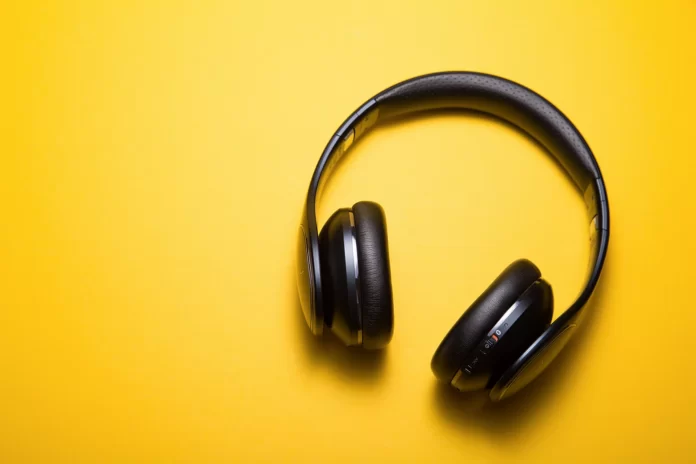If you often listen to music, then of course you have noticed how much the sound quality depends on the format in which the track is played. About 10 years ago, MP3 was the most popular format. Its advantage was that the music file was compressed by a codec, so it took up little space on the device.
On the other hand, the compression significantly distorts and crops the original material. This is especially noticeable when listening to music with good headphones, such as AirPods. Considering that the standard MP3 bitrate is 128 kb\s, low and high frequencies are simply cut out, i.e. become inaudible.
In today’s world, where Internet speed has greatly increased and music can be listened to from streaming services, compressing tracks becomes unreasonable. In fact, you can listen to songs in studio quality, as they were originally recorded.
ALAC (Apple Lossless Audio Codec), which preserves every bit of the original audio file, provides exactly that. At the same time, there’s no need to compromise, because all music in Apple Music is now available in this quality.
Well, here’s what you should know about Lossless Audio.
What is Lossless Audio
To be more precise, Lossless Audio is a file format that compresses audio without compromising the original recording quality. It takes advantage of compression algorithms to preserve sound quality, including texture and detail, by limiting the silence to almost nothing. As the name suggests, it aims to convey the musical experience as intended by the performer.
The simplest digital audio format is MP3. AAC (Advanced Audio Codec) is one level higher, ALAC (Apple Lossless Audio Codec) and FLAC (Free Lossless Audio Codec) are even higher. The last two are Lossless Audio formats. It’s believed that the sound and details of the track are preserved when encoded into these formats.
When converting audio to digital file format, sound engineers need to compress the sound to reduce the file size. During compression, frequencies at the lowest and highest ends can be lost, resulting in a loss of sound. This means that you won’t get the full studio experience with lossy sound. There are several lossy formats, such as MP3, MP4, WMA, and AAC.
However, if the frequencies and bitrate remain unchanged even after compression, and the digital copy is identical to the original sound, it’s called Lossless Audio. Popular Lossless Audio formats are AIFF, FLAC, and WAV files.
What is FLAC and ALAC
A FLAC (Free Lossless Audio Codec) file is an audio file that has been compressed without losing sound quality. The .flac file format is considered inferior to MP3 in terms of compression rates, but FLAC clearly exhibits better sound quality results.
FLAC files are very popular among fans of listen to the audio on high-end music equipment. Many audiophiles prefer to create their own audio collection, where FLAC format contributes to the quality of listening to music.
ALAC (Apple Lossless Audio Codec) is a compressed audio format, but it doesn’t sacrifice sound quality, which remains the same as the original recording.
What devices support Apple Lossless Audio
Apple has confirmed that you can listen to Lossless Audio on “Apple Music” on the following devices:
- iPhone (running iOS 14.6 or later).
- iPad (running iPadOS 14.6 or newer).
- Mac Mini, iMac, and MacBook (running macOS 11.4 or later).
- Apple TV (running tvOS 14.6 or newer).
Apple Music for Android also supports Apple Lossless Audio. However, keep in mind that Apple Music won’t support Dolby Atmos and Spatial Audio on Android.
What is Spatial Audio
Spatial Audio is a surround sound technology based on the Dolby Atmos audio format. It provides a three-dimensional sound imitation as if the sound is coming from several sources at once, thus creating the effect of presence.
What’s most important, though, is the interactivity of playback. It means that if you use special headphones that recognize head turns, you can change the direction of the sound by turning your head in different directions.
How to listen to Spatial Audio in Apple Music
Spatial Audio supports all the same devices as Lossless Audio:
- iPhone 7 and newer.
- iPad Pro 11″ (all models).
- iPad Pro 12.9″ (3rd generation or newer).
- iPad (6th generation and newer).
- iPad Air (3rd generation and newer).
- iPad mini (5th generation and newer).
- MacBook Pro (2018 and newer).
Nevertheless, Spatial Audio is considered a more advantageous technology than Lossless Audio because, firstly, it will be understandable to the absolute majority of users, and, secondly, it doesn’t require any fiddling.
All you have to do is plug in compatible headphones to the device – and a lot of people obviously have them – and then just shake your head from side to side to feel the effect of the presence on you. No Hi-Res headphones, no adapters, and no warming up wires.






